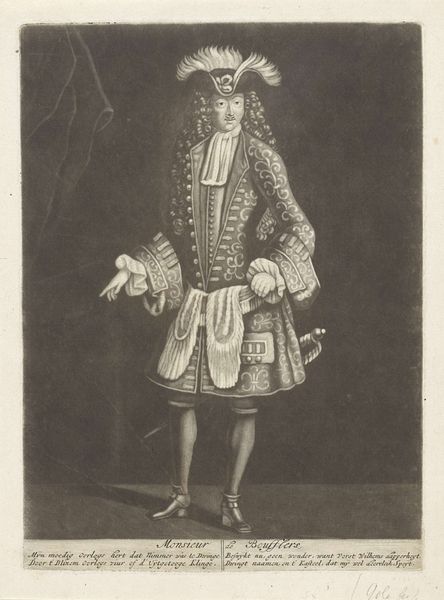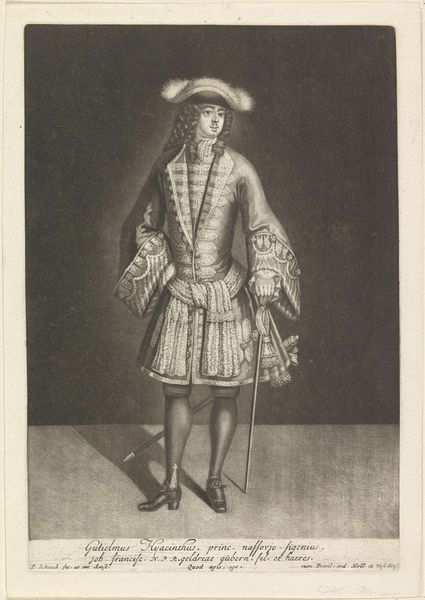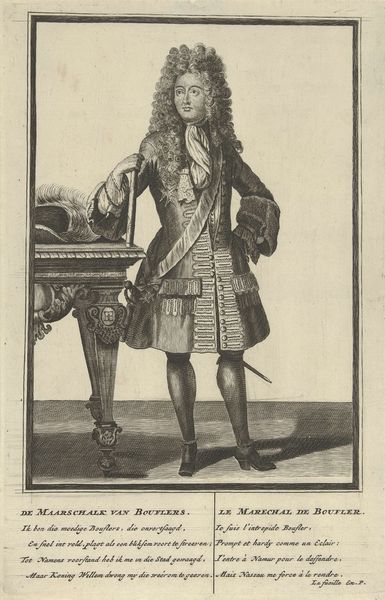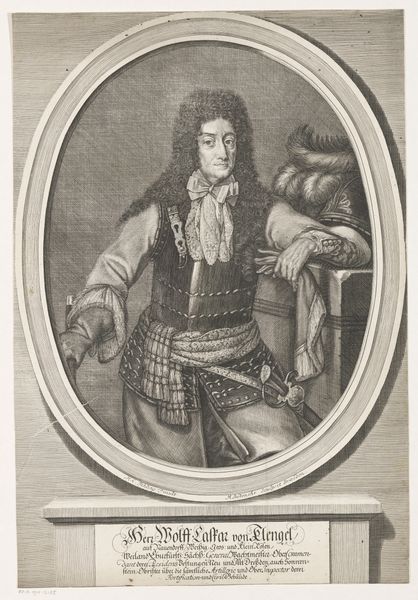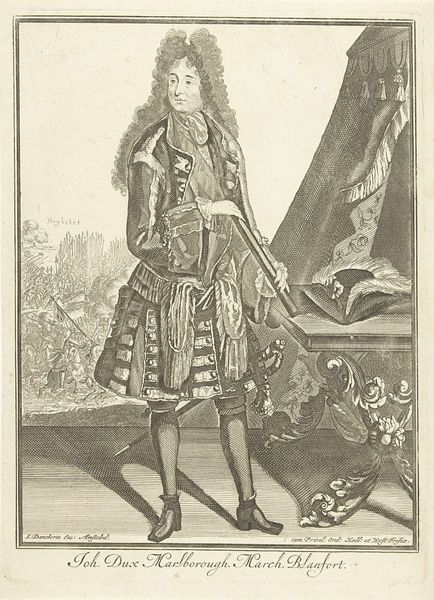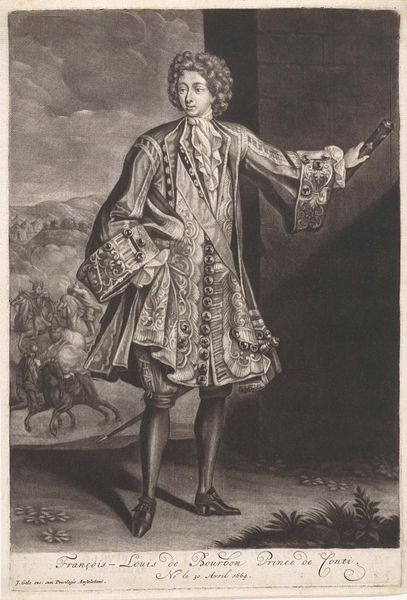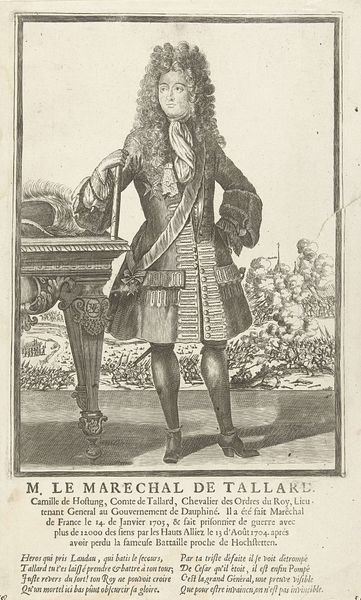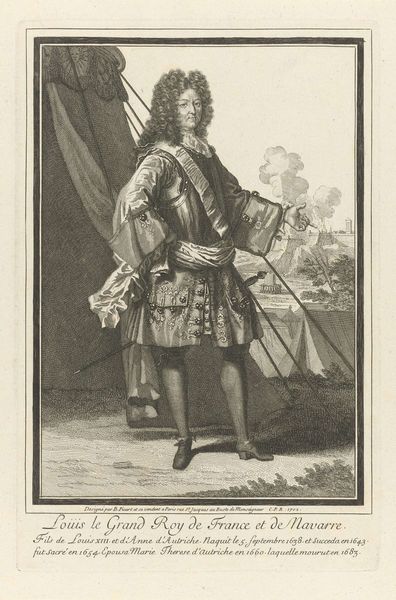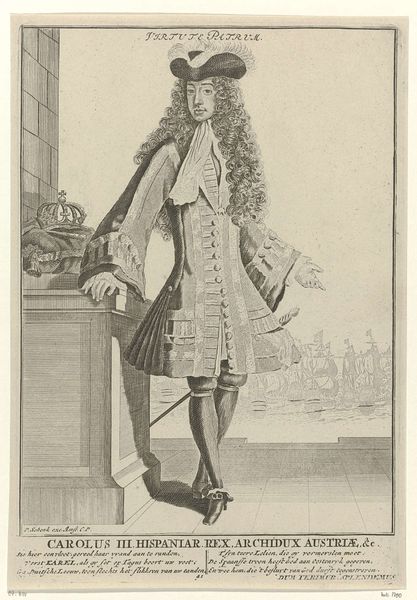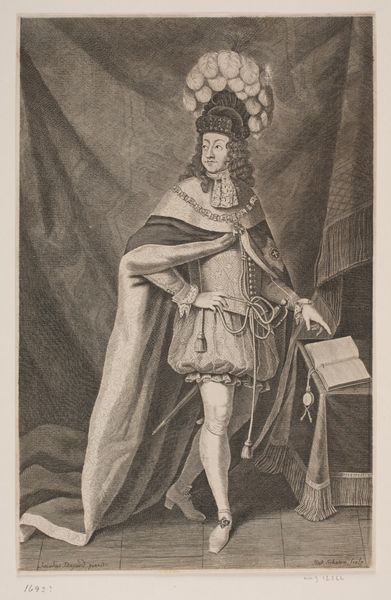
print, engraving
#
portrait
#
baroque
# print
#
charcoal drawing
#
archive photography
#
historical photography
#
portrait reference
#
old-timey
#
framed image
#
history-painting
#
engraving
Dimensions: height 252 mm, width 173 mm
Copyright: Rijks Museum: Open Domain
Editor: This engraving, "Portret van François Louis de Bourbon" by Pieter Schenk, dates from between 1679 and 1713. It's incredibly detailed, capturing the subject in opulent attire, pointing as if commanding something... or someone. How do you interpret this work? Curator: Beyond the surface of a typical Baroque portrait meant to convey status, I see a fascinating reflection of power and its performance. This is François Louis de Bourbon, Prince of Conti. Consider the period: absolute monarchies are consolidating power, deeply enmeshed in religious and dynastic conflicts. The very act of Schenk creating and disseminating this image through print – a relatively new technology – is a statement. How do you think that act impacts the statement made by the artwork? Editor: Well, making it a print certainly makes it more accessible, doesn’t it? Perhaps spreading the image, and therefore the power of the Bourbons, more widely? Curator: Precisely! This isn't just a portrait; it's propaganda. The pose, the clothing, the very act of dissemination all contribute to the construction of an identity meant to project authority and influence. The visual language here tells us much about gender roles, aristocratic identity, and the construction of French national identity during this turbulent time. This engraving then functions as a historical document that tells an extremely skewed and self-serving version of events. Editor: That's a compelling way to look at it; seeing it as propaganda rather than just a portrait opens up so many new avenues of interpretation. Curator: Exactly. Thinking about art as a tool in larger power structures helps us to read images in nuanced ways and appreciate art history not as just a succession of styles but as evidence in a social power struggle. Editor: I hadn’t considered that this portrait could function as both a status symbol and a tool for disseminating Bourbon power, making history and identity one and the same.
Comments
No comments
Be the first to comment and join the conversation on the ultimate creative platform.
